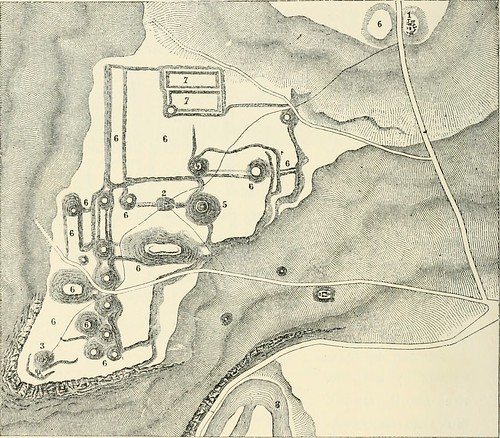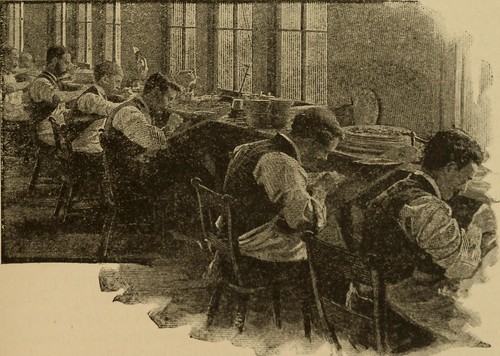(Posted from China Injection Mold blog)
A few nice china pipe molds images I found:
Image from page 144 of “The ancient cities of the New World : being travels and explorations in Mexico and Central America from 1857-1882” (1887)
Image by Internet Archive Book Images
Identifier: ancientcitiesofn00char
Title: The ancient cities of the New World : being travels and explorations in Mexico and Central America from 1857-1882
Year: 1887 (1880s)
Authors: Charnay, Désiré, 1828-1915
Subjects: Indians of Mexico Indians of Central America
Publisher: London : Chapman and Hall
Contributing Library: Getty Research Institute
Digitizing Sponsor: Sloan Foundation
View Book Page: Book Viewer
About This Book: Catalog Entry
View All Images: All Images From Book
Click here to view book online to see this illustration in context in a browseable online version of this book.
Text Appearing Before Image:
aight and curv^ed water-pipes, vases andfragments of vases, enamelled terra-cotta cups, bringing to mindthose at Tenenepanco; seals, one of which (an eagles head) I hadengraved for my personal use ; bits which were curiously like old Palpan and the Toltecs. 107 Japanese china ; moulds, one having a head with a huge plait andhair smoothed on both sides of her face, like an old maid ;besides innumerable arrow-heads and knives of obsidian strewingthe ground. In fact, a whole civilisation. This house, the first it was our fortune to discover, was builton a somewhat modified natural elevation ; the various apart-ments follow the direction of the n ■;.a^^j^fe:;^«^:^,,,,,, „„_^ ■ ■ – ■ ^■^^■^fe^^a ground and areranged on dif-ferent levels, num-bering from zeroelevation for thelowest to 8 ft.for the highest.The walls areperpendicular, theroofs flat ; and athick coatino- ofcement, the sameeverywhere, wasused, whether forroofs, ceilings,floors, pavements,or roads. On examininof
Text Appearing After Image:
GROUND PLAN OF TOLTEC PALACE UNEARTHED AT TULA (LEMAIRE). No. I. Principal Court. No. 2, Facade. No. 3, Entrance. No. 4,Reception Apartment. No. 5, Ruined W^all. No. 6, Enclosuresfor Animals. No. 7, Right W^ing of the Palace. No. 8, LeftWing. the monuments at Tula, we are filled with admiration for themarvellous building capacity of the people who erected them ;for, unlike most primitive nations, they used every material atonce. They coated their inner walls with mud and mortar,faced their outer walls with baked bricks and cut stone, hadwooden roofs, and brick and stone staircases. Thev were io8 The Ancient Cities of the New World. acquainted with pilasters (we found them in their houses), withcaryatides, with square and round columns ; indeed, they seem tohave been familiar with every architectural device. That theywere painters and decorators we have ample indications in thehouse we unearthed, where the walls are covered with rosettes,palms, red, white, and gray geometrical figures
Note About Images
Please note that these images are extracted from scanned page images that may have been digitally enhanced for readability – coloration and appearance of these illustrations may not perfectly resemble the original work.
Image from page 143 of “The ancient cities of the New World : being travels and explorations in Mexico and Central America from 1857-1882” (1887)
Image by Internet Archive Book Images
Identifier: ancientcitiesofn00char
Title: The ancient cities of the New World : being travels and explorations in Mexico and Central America from 1857-1882
Year: 1887 (1880s)
Authors: Charnay, Désiré, 1828-1915
Subjects: Indians of Mexico Indians of Central America
Publisher: London : Chapman and Hall
Contributing Library: Getty Research Institute
Digitizing Sponsor: Sloan Foundation
View Book Page: Book Viewer
About This Book: Catalog Entry
View All Images: All Images From Book
Click here to view book online to see this illustration in context in a browseable online version of this book.
Text Appearing Before Image:
foundhere materials readyto hand for theirconstructions. I began my exca-vations by soundingthe small moundNo. I to the north-east, where the side of a wall was visible ; and I found everywhere the ground con-necting houses, palaces, and gardens, thickly coated with cement ;but in the inner rooms the flooring was of red cement. Therubbish was cleared away, and in a few days a complete housewas unearthed, consisting of several apartments of various size,nearly all on different levels; having frescoed walls, columns,pilasters, benches, and cisterns, recalling a Roman implMvium, GROUND PLAN OF FIRST TOLTEC HOUSE UNEARTHED AT TULA(FROM LEMAIRE). A, Cisterns. B, Various Apartments. C, Kitchen.D, Seats. E, Entrance. io6 The Ancient Cities of the New World. whilst flights of steps and narrow passages connected the variousapartments. We had brought to Hght a Toltec house! I picked out of the rubbish many curious things : huge bakedbricks, from one foot to nine inches by two and two and a half
Text Appearing After Image:
ri.AN OF THE HIl.L AT TULA (ANCIENT TALTAN). No. I, Excavations of Toltec House. No. 2, Tomb Excavated. No. 3, Palace Excavations.Nos. 4 and 5, Pyramids of Sun and Moon. No. 6, Esplanades and Mounds, Sites of AncientDwellings. No. 7, Tlachtli, Tennis-Court. No. 8, Tula River, in thickness ; filters, straight and curv^ed water-pipes, vases andfragments of vases, enamelled terra-cotta cups, bringing to mindthose at Tenenepanco; seals, one of which (an eagles head) I hadengraved for my personal use ; bits which were curiously like old Palpan and the Toltecs. 107 Japanese china ; moulds, one having a head with a huge plait andhair smoothed on both sides of her face, like an old maid ;besides innumerable arrow-heads and knives of obsidian strewingthe ground. In fact, a whole civilisation. This house, the first it was our fortune to discover, was builton a somewhat modified natural elevation ; the various apart-ments follow the direction of the n ■;.a^^j^fe:;^«^:^,,,,,, „„_^ ■ ■
Note About Images
Please note that these images are extracted from scanned page images that may have been digitally enhanced for readability – coloration and appearance of these illustrations may not perfectly resemble the original work.
Image from page 490 of “The fireside university of modern invention, discovery, industry and art for home circle study and entertainment” (1902)
Image by Internet Archive Book Images
Identifier: firesideuniversi01mcgo
Title: The fireside university of modern invention, discovery, industry and art for home circle study and entertainment
Year: 1902 (1900s)
Authors: McGovern, John. [from old catalog]
Subjects: Science
Publisher: Chicago, Union pub. house
Contributing Library: The Library of Congress
Digitizing Sponsor: The Library of Congress
View Book Page: Book Viewer
About This Book: Catalog Entry
View All Images: All Images From Book
Click here to view book online to see this illustration in context in a browseable online version of this book.
Text Appearing Before Image:
ages under misleading names, and real China-ware—the first of the famous Dresden China—began to come outof the fortress. At the Worlds Fair of 1893, the Royal Saxon CHINA. 445 potteries exhibited their manufactures, but their art seemed tohave developed into the making of artificial flowers rather thantable ware. The great Porcelain Porch, in the Imperial GermanExhibit, outdid the famous Porcelain tower of Man-King inChina. Did Bottichers secret escape ? Yes. The Emperor of Austria finally founded a factory atVienna, but it never succeeded fully. To start it, a workmanescaped from the prison-like works at the castle of Meissenabout ten years after the first Porcelain was made. The Vien-nese royal pottery ran, however, till 1864. When did the King of France start his Porcelain Factory ? In 1753, when a semi-private factory at Vincennes was removedto the town of Sevres, in the suburbs of Paris. The Frenchchemists actually prepared an artificial Kao-lin, and used it for -m~*-^^ ~f—
Text Appearing After Image:
Fig. 167. GILDING THE PORCELAIN. 446 THE FIRESIDE UNIVERSITY. the biscuit until the German secret came out and French Kao-linwas found, in 17 – H, -Hn ynadet White sand, 60; nitre. 22 : sal:. 7.2 ; alum, $ -6 S soda, 3.6 ;gvpsum, 3.6. This compound was roasted at a high tempera-ture, then ground to a fine powder, and washed with boilingwater. To nine parts of this mixture, or frit, two parts of chaand one of a pipe-clay were added. This mixture was againground, and passed through silk sieves. It was mixed formolding with water and soap or size, and in this condition wasoperated on by the potter. How docs the Sevres Potter proceed t If making a set of plates or saucers, he takes the potterswheel, exactly as the later Egyptians did, and turns it withhis feet. A mold of a plate is set on the wheel. Forillustration, let us (incorrectly) suppose it be a plate exactly 1the one he is to produce on the wheel. The mold, then, isturned bottom upward. On the bottom of the mold, he spreadsa very t
Note About Images
Please note that these images are extracted from scanned page images that may have been digitally enhanced for readability – coloration and appearance of these illustrations may not perfectly resemble the original work.
Read more about Image from page 144 of "The ancient cities of the New World : being travels and explorations in Mexico and Central America from 1857-1882" (1887)
No comments:
Post a Comment